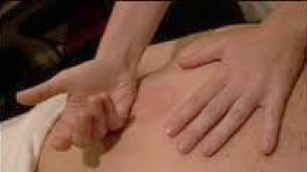Tui Na

What is Tui Na?
Simply put, Tui Na is Chinese medical massage, literally meaning “to push and to pull”. It is a bodywork therapy developed in China 2,000 years ago. Much like acupuncture, Tui Na works with Qi, the body’s energy, balancing it and enhancing it, to bring about homeostasis in the body. Unlike acupuncture, it uses no needles. The work is done entirely with the practitioner’s hands, much like western massage is performed. The focus of Tui Na is to move out any type of stasis through the meridians in the body, releasing stagnation and tension.
Tui Na methods combine the use of hand techniques to massage the muscles and tendons of the body, acupressure techniques which directly affect the flow of Qi, and manipulation techniques to realign the muscles and ligaments.
The experience of Tui Na could be described as a cross between shiatsu, physiotherapy, and acupressure.
What makes Tui Na effective?
One of the advantages of Tui Na over western massage is its ability to focus on specific problems, especially chronic pain associated with the muscles, joints, and skeletal system. It's especially effective for joint pain, such as arthritis, sciatica, muscle spasms, as well as pain in the back, neck, and shoulders. It also helps chronic conditions such as insomnia, constipation, headaches, including migraines, and the tension associated with stress. Tui Na does not simply work on the muscles, bones, and joints, though. It works with the energy of the body at a deeper level.
Are there cautions to be considered with Tui Na?
There are no negative side effects as such with Tui Na. That said, good solid communication with your practitioner will assure you of a pleasant, healing experience. In certain rare situations, Tui Na might not be recommended. For example, a patient suffering from osteoporosis, would not be a good candidate for the deep manipulation that often accompanies this type of therapy.
